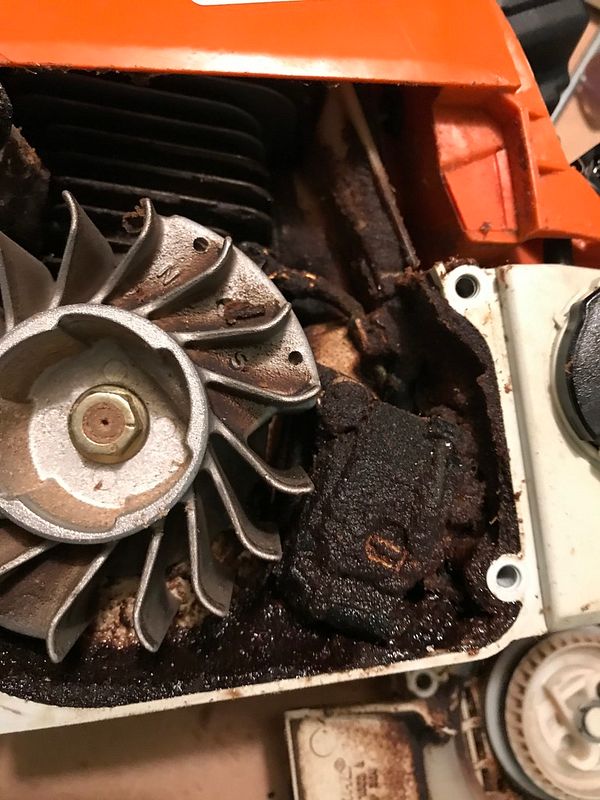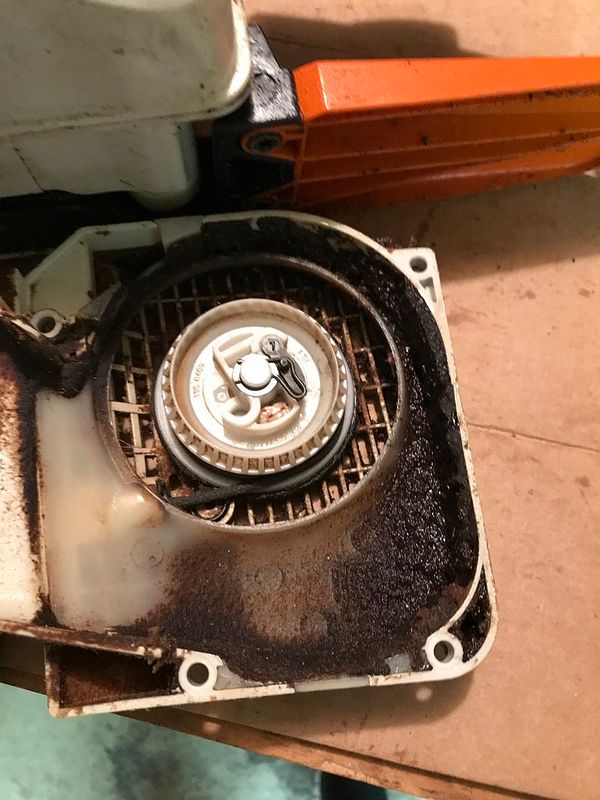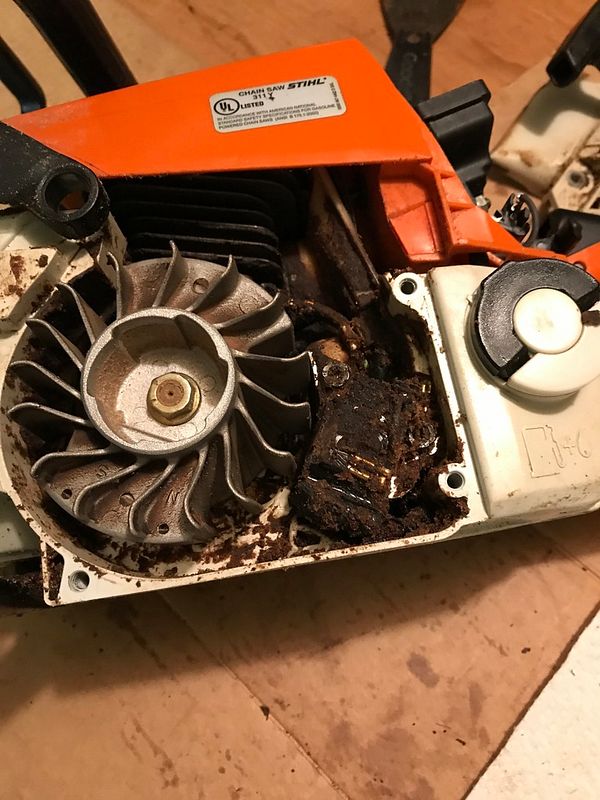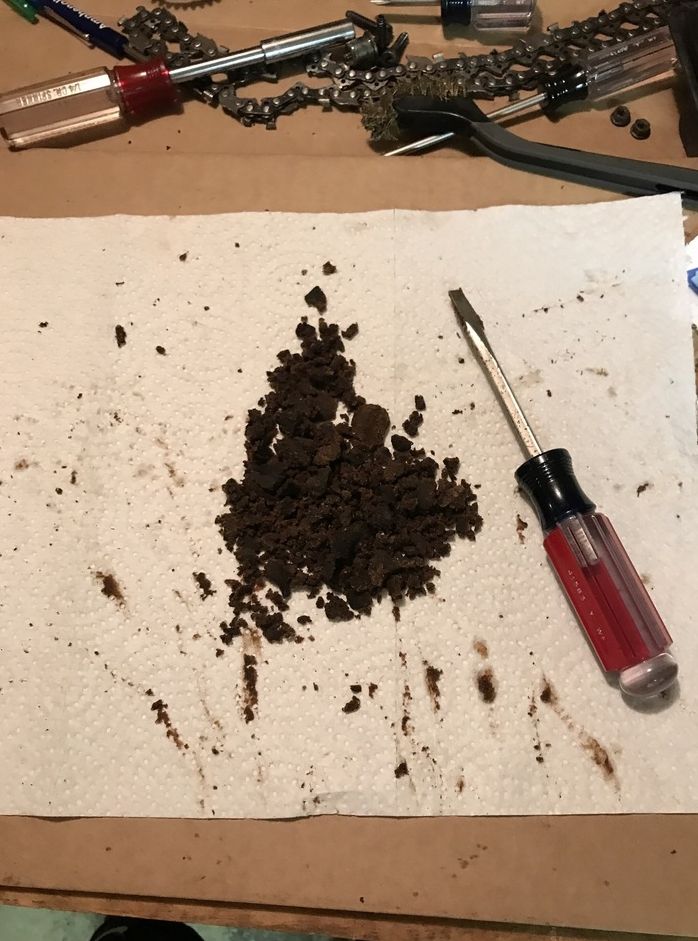I got a used Stihl MS250c from my in-laws. I am pretty sure by the looks of it, that it was used to cut wood that wasn't very clean and the saw was NEVER cleaned.
I scrape some of the large gobs of junk out of the saw and took apart the carb to clean it as the saw will not run, had old gas, and sawdust in the carb, and a totally clogged air filter.
Here are a few pictures:



I still need to do more cleaning but this picture does not do justice to the pile of gunk that came out so far....

I also did some cleaning on the clutch side which was equally as filthy. I should have taken a few pictures but did not. While cleaning the clutch side I had to reset the spring for the chain brake as that was not in the right position on the lever. To get some of the crud out the saw was tapped on the bench with the clutch side down.....
The piston moved freely prior with good compression, there is still good compression now however, there is a "clunk" and some resistance as if there is something binding inside when the flywheel is turned now.
What could it be???
Here is a video with the sound of it.
I scrape some of the large gobs of junk out of the saw and took apart the carb to clean it as the saw will not run, had old gas, and sawdust in the carb, and a totally clogged air filter.
Here are a few pictures:



I still need to do more cleaning but this picture does not do justice to the pile of gunk that came out so far....

I also did some cleaning on the clutch side which was equally as filthy. I should have taken a few pictures but did not. While cleaning the clutch side I had to reset the spring for the chain brake as that was not in the right position on the lever. To get some of the crud out the saw was tapped on the bench with the clutch side down.....
The piston moved freely prior with good compression, there is still good compression now however, there is a "clunk" and some resistance as if there is something binding inside when the flywheel is turned now.
What could it be???
Here is a video with the sound of it.

























































